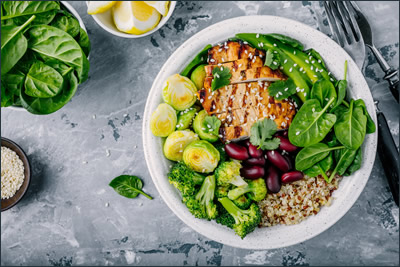How the Glycemic Index Can Help You Shape Up

The Glycemic Index is a concept that is worth understanding, since it relates to the overall quality of the diet and also is key to weight loss - or more exactly, the reduction of unwanted FAT in the body.
The Glycemic Index looks at the effects of carbohydrate-containing foods on the sugar levels in your bloodstream. Whenever you eat and digest carbohydrate-rich foods - like fruits, vegetables, grains and sweets - the end result is a rise in your blood sugar (blood glucose). This sugar in your blood is important. It's the primary fuel for your brain and muscles, and in large part keeps you going mentally and physically throughout your day.
Not all carbohydrate-containing foods cause your blood sugar to rise to the same degree, and this is where the Glycemic Index (or GI) comes in. The GI ranks foods according to how much and how rapidly they cause the blood sugar to rise after they're eaten.
Which foods have the highest Glycemic Index?
The highest GI foods are those that are low in fibre but starchy or sugary - such as like white bread, sweet breakfast cereals, noodles, fruit juices and white rice. Since they are digested and absorbed relatively quickly, these high Glycemic Index foods tend to cause fairly large and rapid rises in blood sugar. The excess glucose in the blood cannot be used by the body and, to put it simply, is converted into fat and stored for future use.
Which foods have a low Glycemic Index?
On the other hand, the lowest GI foods are those carbohydrate-rich foods that are whole and unprocessed. So, vegetables, whole fruits, beans, and most 100% whole grain foods - like brown rice, rolled oats, barley, quinoa and 100% whole grain bread - have relatively low Glycemic Index rankings. That's because they're high in fibre, which means they take longer to digest so your blood sugar rises more gently after you eat them. Some vegetables, however, like potato, pumpkin, corn and even sweet potato are high in GI.
Rather than a big spike in blood sugar, these wholesome foods lead to a slower release into your bloodstream, which provides you with more sustained energy. Thanks to their high-fibre content, they're also more filling. So, a diet that emphasizes low GI foods can be a good strategy for weight control.
Adjusting the Glycemic Index of your diet
To cut back on your high GI foods and reduce the carbohydrate load of your diet overall, here are some switches you can easily make.
Instead of white rice and potatoes, switch to brown rice or other whole grains like cracked wheat, barley, millet or quinoa. Or substitute beans, lentils or sweet potatoes. Rather than drinking a lot of calories from high Glycemic Index fruit juices, eat whole fresh fruits instead. Have berries on cereal or a whole piece of fruit for a snack or dessert. Switch from refined white breads, crackers and snack foods to products that are made with 100% whole grain - or try nuts instead of chips for snacks.
Whole and lightly processed low GI foods are more bulky and filling than their refined cousins, which means they retain their natural vitamins, minerals and healthy antioxidant phytonutrients, too. That means that you get more nutrition for your calories. By swapping out the high GI foods and replacing with more low GI items, you can greatly reduce the overall carbohydrate load of your diet - which can help you with calorie control while providing a healthy nutrient boost.

